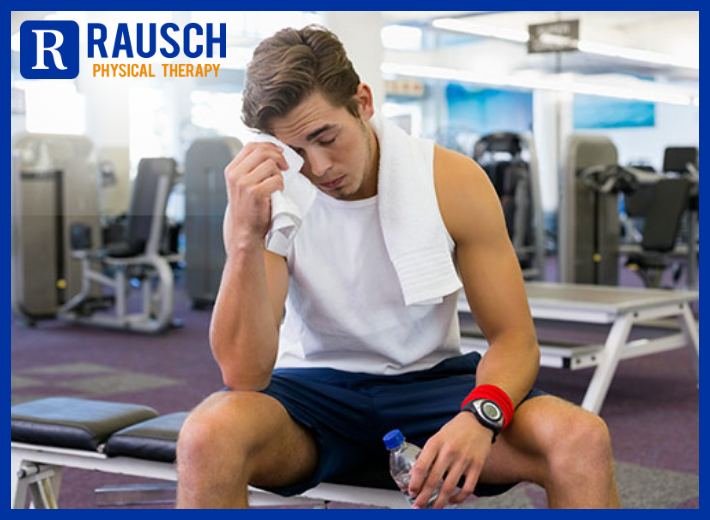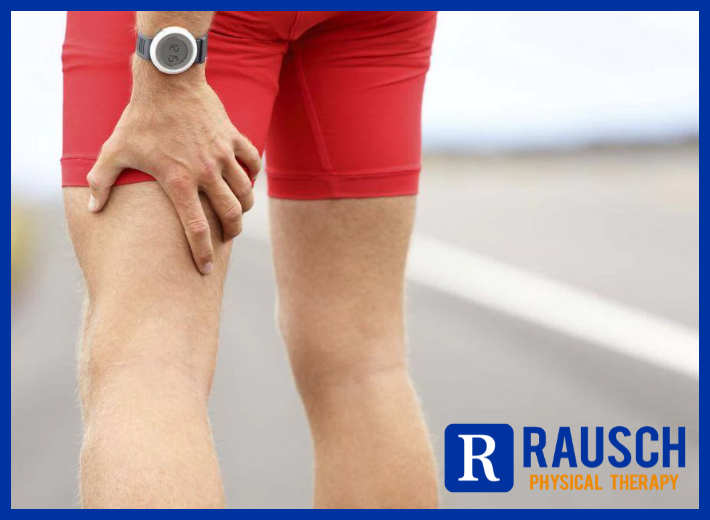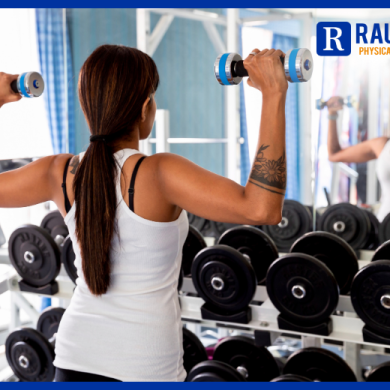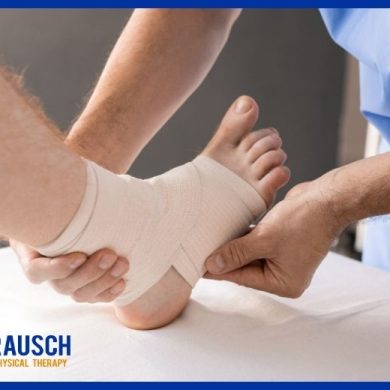At Rausch Physical Therapy and Wellness, we believe that movement is medicine—at every age and every stage of life. That’s why we’re excited to announce our new partnership with Fort Fitness,
Why Do I Feel Pain After Exercise?
November 2, 2021 10:19 am / Category: Physical Therapy

Mild soreness after a workout can cause discomfort but it is generally not a bad thing. It’s just a sign that the muscle has been taxed. The stress on the muscle causes a microscopic breakdown of muscle fibers, which in turn causes discomfort. The muscle breakdown serves a purpose: when those fibers rebuild, the muscle is stronger. This leads us to this funny fact: it’s not working out that makes you stronger, it’s the rest between the workouts. For more information about the pain that you feel after working out, read below.
Have you ever felt sore after starting a new activity or pushing yourself harder than usual during a workout?
Muscle pain that shows up a day or two after exercising can affect anyone, regardless of your fitness level.
But don’t be put off. This type of muscle stiffness or achiness is normal, doesn’t last long, and is actually a sign of your improving fitness.
Why do my muscles feel sore after exercising?

When muscles are required to work harder than they’re used to, or in a different way, it’s believed to cause microscopic damage to the muscle fibers, resulting in muscle soreness or stiffness.
DOMS is often mistakenly believed to be caused by lactic acid build up, but lactic acid isn’t involved in this process.
Who can DOMS affect?
Anyone can develop DOMS, even those who have been exercising for years, including elite athletes.
It can be alarming for people who are new to exercise, and it may dent their initial enthusiasm to get fit. The good news is that the pain will decrease as your muscles get used to the new physical demands being placed upon them.
The soreness is part of an adaptation process that leads to greater stamina and strength as the muscles recover and build. Unless you push yourself hard, you’re unlikely to develop DOMS after your next exercise session.
What type of activities can cause DOMS?
Any movement you’re not used to can cause DOMS – in particular, movements that cause the muscle to contract while it lengthens, called eccentric muscle contractions.
Examples of eccentric muscle contractions include going down stairs, jogging or running downhill, lowering weights (such as the lowering phase of a bicep curl), and the downward motion of squats and push-ups.
How long does DOMS last for?
DOMS typically lasts between three and five days. The pain, which can range from mild to severe, usually occurs one or two days after the exercise.
This sort of muscle pain shouldn’t be confused with any kind of pain you might experience during exercise, such as the acute, sudden and sharp pain of an injury, such as muscle strains or sprains.
How can I treat DOMS?
There’s no one simple way to treat DOMS. Nothing is proven to be 100% effective. Treatments such as ice packs, massage, tender-point acupressure, anti-inflammatory drugs (such as aspirin or ibuprofen), and rest may help ease some of the symptoms.
DOMS doesn’t generally require medical intervention. However, seek medical advice if the pain becomes debilitating, you experience heavy swelling, or your urine becomes dark.
How can I prevent DOMS?
One of the best ways to prevent DOMS is to start any new activity program gently and gradually. Allowing the muscle time to adapt to new movements should help minimize soreness.
There’s little evidence that warming-up will be effective in preventing DOMS. But exercising with warmed-up muscles will reduce your chance of injury and improve your performance.
While stretching has many benefits, there’s currently no evidence stretching before or after exercise helps reduce or prevent DOMS.
Can I continue exercising with DOMS?
You can exercise with DOMS, although it may feel uncomfortable, especially during the warm-up phase. You may find the pain goes away during the session, but returns after exercising once your muscles have cooled down.
If the pain makes it hard to exercise, it’s advisable to refrain from the activity for a few days until the pain eases. Alternatively, you could focus on exercises targeting less affected muscles to allow the most affected muscle groups time to recover.
Will I keep getting DOMS?
DOMS is a type of muscle conditioning, which means your muscles are adapting to the new activity. The next time you perform the same activity, or exercise at the same intensity, there’ll be less muscle tissue damage, less soreness, and a faster recovery.
Just one bout of DOMS actually develops a partially protective effect that reduces the chances of developing soreness in that same activity for the following weeks or months.
Looking for personalized treatment and professionals who care? At Rausch Physical Therapy, we will help you recover, improve mobility, and make sure you’re ready for the next adventure you plan – or life throws your way. Contact us today at (949) 276-5401 and join our Facebook community.
Reference: [https://www.livehealthily.com/sports-injuries/why-do-i-feel-pain-after-exercise]





